Design of Composite Beams According to ENV 1994-1-1:1992
COMPOSITE-BEAM | Features
- Single-span and continuous beams with definable boundary conditions
- Automatic determination of effective cross-sections
- Free arrangement of construction supports for construction stage
- Freely definable concentrated, distributed, and trapezoidal loads as fixed loads with specification of concrete age during loading
- Freely definable construction loads as well as moving construction loads
- Automatic load combination
- Calculation of cross-section properties according to Method 1 or 2
- Calculation of elastic internal forces with RSTAB
- Redistribution of Moments
- Design of bending and shear force resistance with interaction
- Determination of required shear connectors and their distribution
- Design of longitudinal shear force resistance
- Results of governing support reactions for construction and composite stage, including loads of construction supports
- Lateral-torsional buckling analysis
- Analysis for limitation of crack widths
- Design of natural frequency
COMPOSITE-BEAM | Input
When entering the structural model, you can define single-span and continuous beams with or without cantilevers. Furthermore, it is possible to specify different span lengths with definable boundary conditions (supports, releases) as well as any construction support and moment release in the construction stage. For a complete cross-section, you can create typical composite beam sections on the basis of steel girders (I-sections) with solid concrete flanges, precast plates, trapezoidal sheets, or tapered solid ceilings.
It is also possible to grade cross-sections by means of beam lengths, optionally with concrete encasement. Illustrative figures facilitate the entry of additional transverse reinforcements for trapezoidal sheeting, profile stiffeners, and angled or circular openings in the web. The self-weight is applied automatically when entering loads. In addition, it is possible to consider fixed and variable loads by specifying the concrete age at the beginning of loading for creeping, and to define single, uniform, and trapezoidal loads freely. COMPOSITE-BEAM automatically creates a load combination based on the data of individual load cases.
COMPOSITE-BEAM | Structural Analysis
When determining internal forces, you can choose between calculation method 1 (uncracked over entire beam length) and calculation method 2 (crack formation over internal columns).
In both cases, it is possible to consider a constant effective width of the concrete slab over the entire span according to ENV 1994-1-1, 4.2.2.1 (1) and a redistribution of the moments. Internal forces for the design of shear connectors can only be determined by the elastic calculation of internal forces using the RSTAB analysis core (no RSTAB license is required).
The calculation performs fully automatic determination of the effective cross-section properties at the respective points of time, considering creep and shrinkage. In the RSTAB user interface, the structural models are created as a member structure, including all boundary conditions and loading. This way, reliable calculation of the internal forces with the effective cross-section properties is ensured.
COMPOSITE-BEAM | Results
Results are displayed in result tables sorted by required designs. Clear arrangement of the results allows for easy orientation and evaluation.
Ultimate Limit State Design:
- Bending and shear force resistance with interaction
- Partial shear connecting of ductile and non-ductile connecting elements
- Determination of required shear connectors and their distribution
- Design of longitudinal shear force resistance
- Design of connection with shear connectors and of connector perimeter
- Results of governing support reactions for construction and composite stage, including loads of construction supports
- Lateral-torsional buckling analysis (for continuous beams and cantilevered girders)
- Check of cross-section classes as well as of plastic and elastic cross-section properties
Serviceability limit state design:
- Deflection analysis
- Deformations and initial pre-cambering determined with ideal cross-section properties from creep and shrinkage
- Analysis of natural frequencies
- Crack width analysis
- Determination of support forces
All data are documented in a clearly arranged printout report, including graphics. In case of any modification, the printout report is updated automatically. COMPOSITE-BEAM is a stand-alone program and does not require the RSTAB license.
Calculate Your Price

The price is valid for United States.


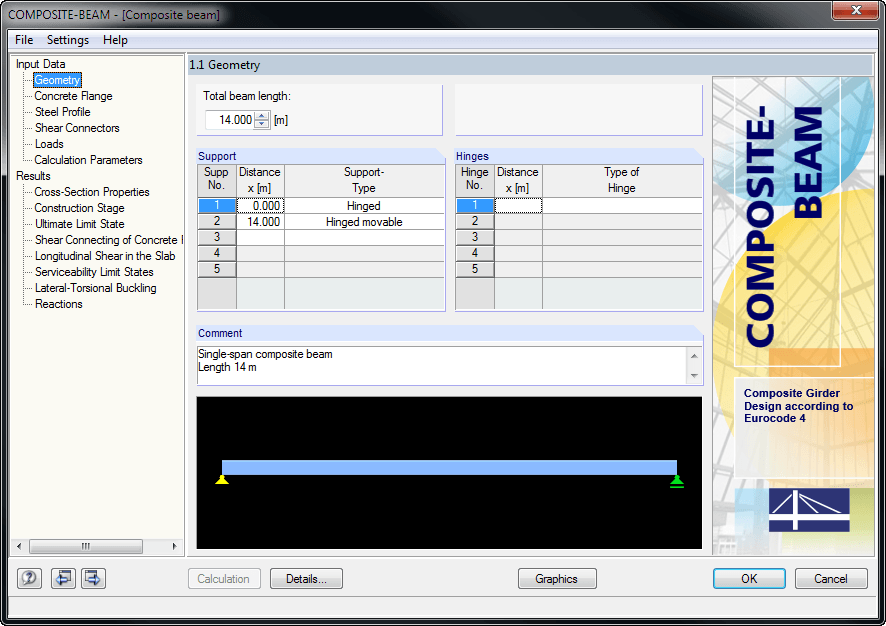
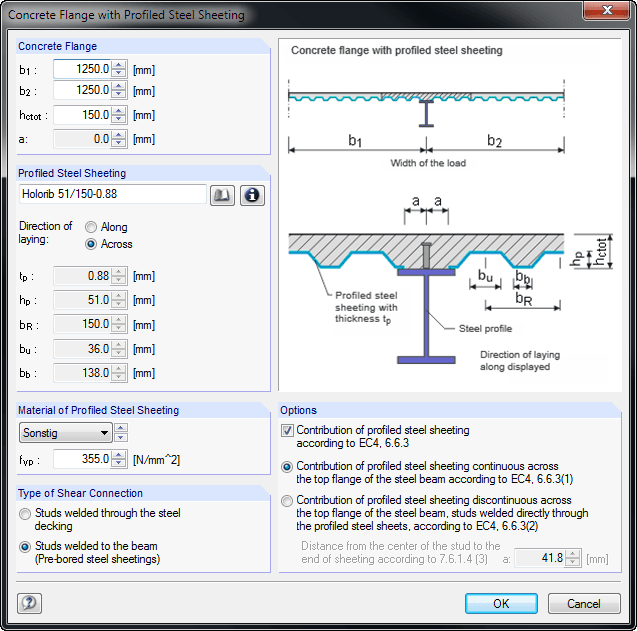
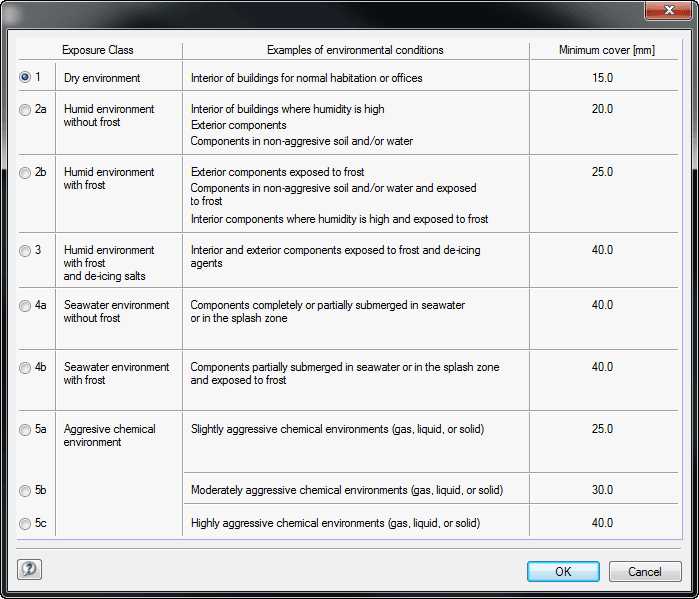
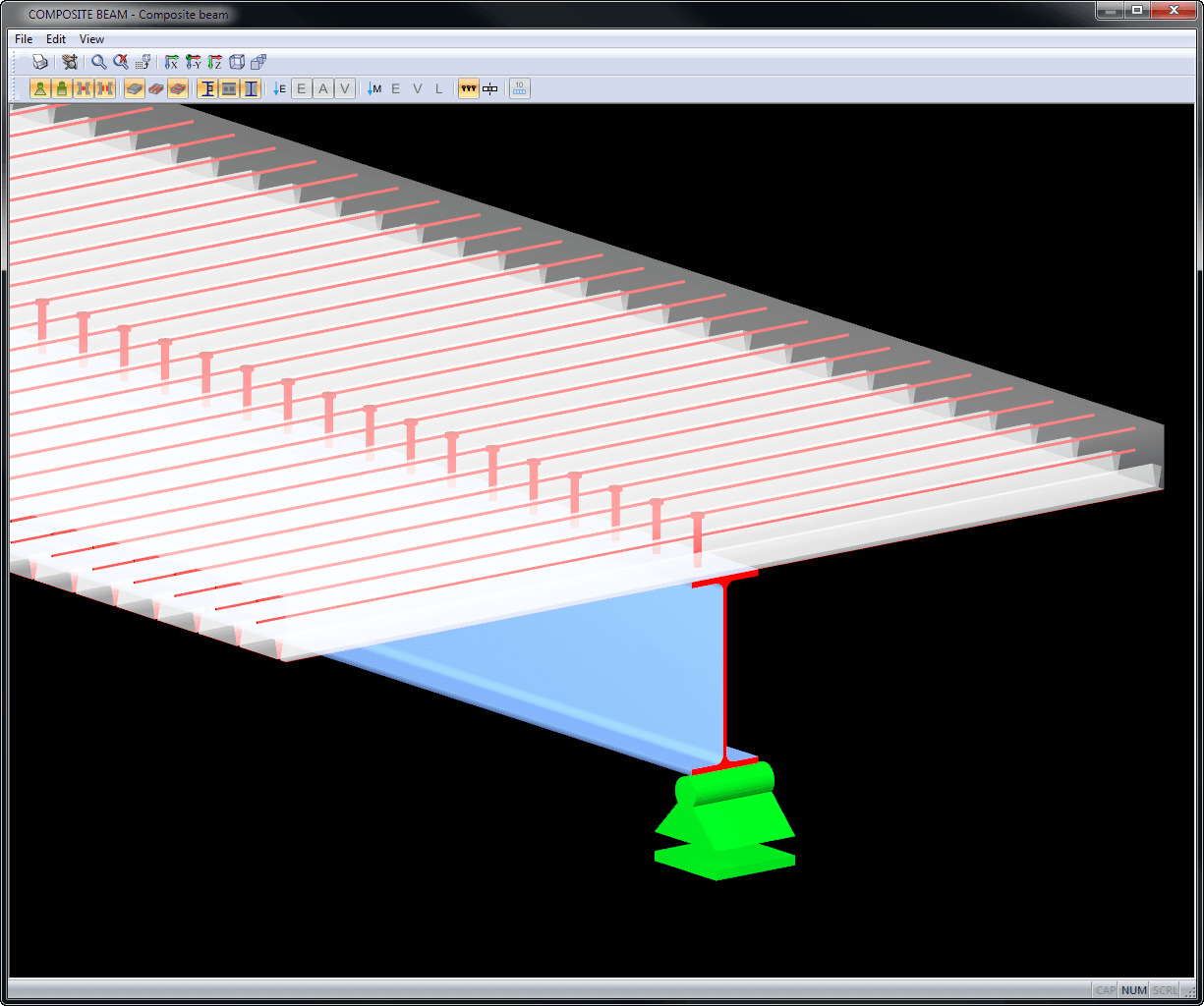
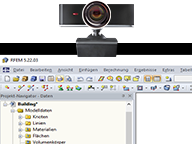
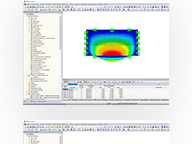
.png?mw=192&hash=f63e4a3f1836233005de32f60201d5392e507cf1)